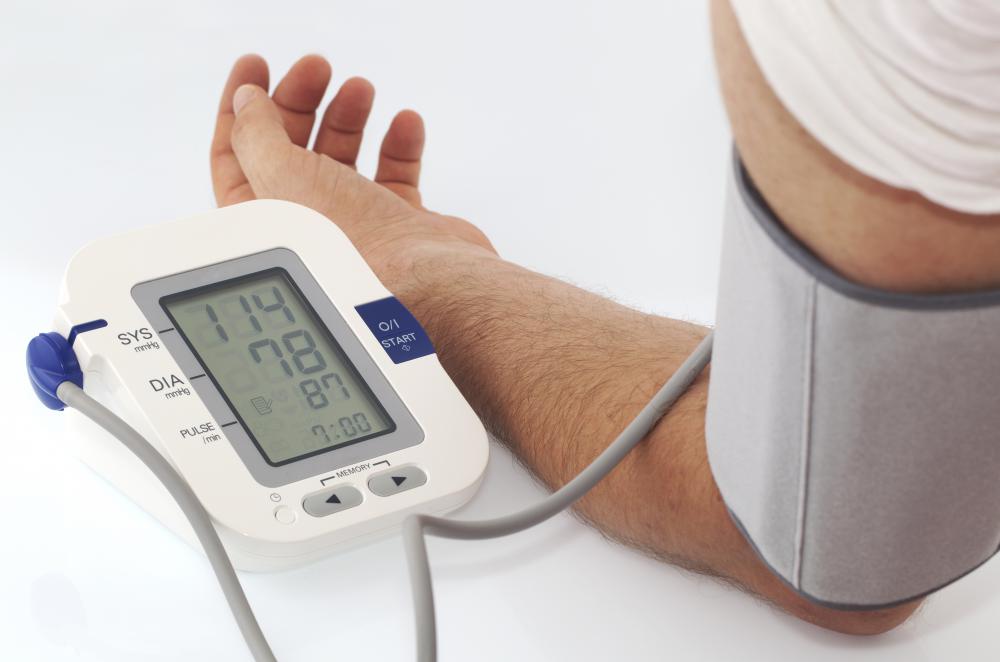At WiseGEEK, we're committed to delivering accurate, trustworthy information. Our expert-authored content is rigorously fact-checked and sourced from credible authorities. Discover how we uphold the highest standards in providing you with reliable knowledge.
What is Isometric Training?
Isometric training is a kind of exercise activity that works on specific training principles to provide a change in muscle tone. With isometric exercises, there is no range of motion. The user maintains a set amount of resistance without changing either the joint angle or the position of the limbs.
In isometric strength training, the length of the muscle doesn’t change for a given exercise. This means that the strength of the muscle will be concentrated at a specific point within its usual range of motion. Some trainers who supervise isometrics training may emphasize training at the widest possible point. For example, a trainer might hold onto a specific amount of weight with the arms extended horizontally.

For enthusiasts of the isometric method, there’s also isometric speed training. Some trainers who advise runners, jumpers, and other athletes contend that isometric exercises can help get a person faster for a race or other event. Runners or other athletes might work isometric speed training into a routine to help prepare muscles for extended work.

Much of the menu of isometric training exercises involves holding positions. The wall sit is a popular example. The individual sits against a wall, holding the position for a set period of time. When this happens, the leg muscles contract and train, but the length of the muscles does not change.
New fitness tools can also be helpful for a range of isometric training activities. Items like resistance bands are often part of holding poses for isometrics. Trainers might also use medicine balls and other types of free weights.

Fitness experts point out that various types of active and passive workouts incorporate isometric training. Yoga and pilates are good examples of activities where isometrics is part of the general routine. Another example is in warm-ups that include lunges or other positions, where the participant holds these positions for several seconds. Wherever these little exercises are learned, they bring the principle of isometric training to an individual fitness session.

Isometric training does carry its own risks and considerations. Some experts warn that doing various isometric exercises can result in momentary hypertension or high blood pressure. The specific challenge of isometric training is not for everyone. Those looking to include this kind of training in a fitness routine should talk to a doctor if they have experienced any health issues, to make sure that isometric training is safe for their workouts.
AS FEATURED ON:
AS FEATURED ON:
















Discussion Comments
@rugbygirl - I agree with you about crunches, but it's worth pointing out that isometric exercises should be just one part of of a fitness program. Flexibility training, resistance training that *does* use range of motion, and cardio exercise should all be part of your workout whether you're a professional athlete or just someone wondering where her abs went after baby.
Another isometric exercise with benefits for your pelvic floor is, of course, the good old Kegel! But in addition, I've heard that squats (which can be done isometrically, i.e holding the squat, and/or dynamically) are also beneficial for the pelvic floor, so if you have a little "sneeze leakage these days" you might want to add those to your routine.
An isometric training program can be a good way to work your abs. There are a lot of disadvantages to doing crunches. Any woman who's had a baby already knows one problem that can arise! And doing crunches can actually make that particular problem worse, as that movement is bad for the muscles of the pelvic floor.
Isometric ab exercises like static abs or planks exercise those muscles without repeatedly flexing the spine. For static abs, you basically bring your hands together and make a triangle with your arms, then prop yourself up on your elbows and hold a plank position. It's incredibly difficult!
Post your comments